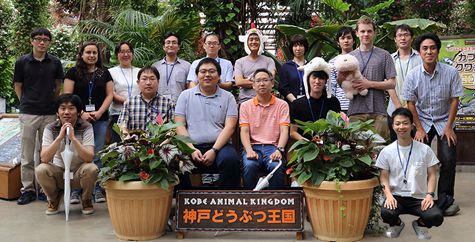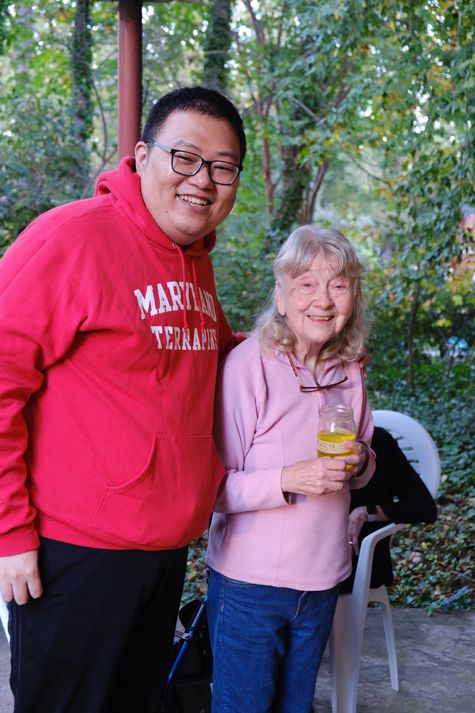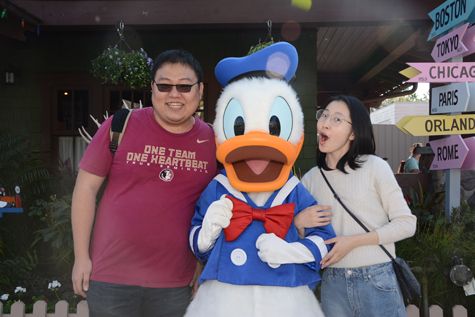Early Career Scientist Spotlight
Dr. Cheng Da (he/him/his)
Data Assimilation Scientist
Global Modeling and Assimilation Office (610.1)
What is your research focus?
My research is focused on data assimilation, which tries to seek the “best” estimation for the state of the studied objects (e.g., atmosphere, ocean) or the parameter vital to the studied processes (e.g., precipitation process) by optimally fusing multi-sourced estimations related to them. In the most common situation, we have two sources: (1) the numerical model simulations, such as the Earth system simulations generated by the NASA Goddard Earth Observing Systems (GEOS), and (2) observations, like those measurements made by the NASA satellites.
One important application of data assimilation is the generation of reanalysis datasets, which are probably the most important datasets for the entire atmosphere and ocean science community. For example, atmospheric reanalysis datasets include 3-dimensional multivariate information for the whole atmosphere constrained by observations. Those reanalysis datasets enable climatologists to study different phenomena spanning a long period, from far in the past until present. Researchers also use reanalysis products to initialize their numerical weather prediction models for their case studies.
As a data assimilation scientist, I have two primary focuses. One primary focus is to develop new assimilation algorithms that rely on fewer assumptions so that previously “unproper” observations can be utilized. This also involves developing quality control procedures to ensure only the portion of observations that satisfies the current assumptions will be digested. On the other hand, running the data assimilation cycling suite is computationally intensive, so its calculation is usually done in parallel using the High-performance Computing Cluster (e.g., Discover NASA). My other primary research focus is to develop scalable data assimilation systems that calculate faster.

Credit: Cheng Da
Tell us about the research projects you are currently working on.
I’m currently working on a NASA Modeling, Analysis, and Prediction (MAP) project involving coupled data assimilation under the supervision of Dr. Stephen G. Penny. This project focuses on two objectives. Using some mathematical tools, we can infer the sea surface temperature (SST) and sea surface salinity (SSS) from NASA satellite measurements. For a long time now, the ocean data assimilation community has been performing ocean analyses by merging those satellite-inferred SST and SSS products with simulations generated by the ocean general circulation model. While those satellite-inferred SST and SSS products might be easier to interpret for oceanographers, more uncertainties are introduced in the generation process compared to the upstream satellite measurements (e.g., radiance observations).
The first objective of this project is to assess the feasibility of directly digesting the “rawer” radiance observations sensitive to ocean surface properties (e.g., sea surface temperature and salinity) into the GEOS ocean general circulation model using data assimilation. We compare its impact on the coupled atmosphere-ocean analyses and forecasts with the commonly adopted approach merging satellite-inferred SST and SSS products. This is motivated by the practice adopted by the atmospheric assimilation community, which obtained significant forecast improvement after switching from assimilating atmospheric retrievals to assimilating radiance. The second objective of this project is to develop coupled data assimilation strategies that can better utilize those radiance observations to improve the air-sea interface representations for the GEOS Earth System Model. Since I am particularly interested in coupled and satellite data assimilation and familiar with radiative transfer calculation, I am very excited about working on this project.
What is one space mission that you are particularly excited about, and why?
I am particularly excited about the Global Precipitation Measurement (GPM), a satellite mission jointly launched by NASA and the Japanese Aerospace Exploration Agency (JAXA) that provides global rain and snow information. Part of my Ph.D. dissertation involved assimilating GPM surface precipitation retrievals to improve typhoon track and intensity predictions. At that time, Prof. Takemasa Miyoshi and his team at RIKEN Advanced Institute for Computational Science (now the RIKEN Center for Computing Science) in Kobe, Japan were also working on GPM precipitation assimilation, and they provided very generous oversea internships for fostering collaborations with international graduate students working on data assimilation. This program is available every year and more information can be found here. I was very fortunate to be offered such an internship to visit Kobe for 3 months, implementing precipitation assimilation into their assimilation system SCALE-LETKF for the non-hydrostatic regional model SCALE developed at RIKEN. My results from that project showed that assimilating GPM surface precipitation could improve the typhoon track and intensity forecasts for up to 3 days. Later, this internship laid the foundation for my research and led to me receiving an NESSF (NASA Earth and Space Science Fellowship) from NASA. I have always felt that GPM is my lucky satellite that brings me good fortune, so in the Acknowledgements section of my Ph.D. Dissertation, I sent my sincere wish to GPM, “May it last long and prosper.”

Credit: Data Assimilation Research Team, RIKEN Center for Computational Science
What is one of your favorite moments in your career so far?
My favorite moment was when I derived an observation localization scheme for ozone-sensitive channels in the ensemble assimilation system, a question that I started to think about when I began my Ph.D. in 2015. At that time, the radiance observations are empirically vertically localized at their weighting function peaks in the ensemble assimilation system. But I knew this method was unsuitable for ozone-sensitive channels because ozone channels have two weighting function peaks. Later, I realized that I needed to develop a mathematically equivalent method to decompose each observation into fractions distributed at all vertical levels so that I can apply more flexible functions, but I never succeeded in finding one. One night in 2021, I suddenly realized that I could fill the hole by using a formula in reverse that I originally developed for precipitation assimilation. Then, it indeed worked! At that moment, I felt immense joy and relief, and better understood how to proceed with theoretical work.
Did you always know that you wanted to be a data assimilation scientist?
Definitely no! When determining my major in the university, I wanted to study mathematics. However, I was afraid I was not smart enough to succeed in achieving a career in math, so I switched to learning meteorology. After entering the university, I found I had a limited passion for drawing weather maps or taking those synoptic meteorological courses. Instead, I was very interested in three topics: numerical weather prediction, data assimilation, and radiative transfer, because they allowed me to simulate some aspects of mother nature with reasonably good accuracy by using some pieces of code, which was shocking to me as they are like the fire brought by Prometheus! Among those three topics, data assimilation would allow me to touch all three with triple pleasure, so I decided to work on data assimilation. But when looking back, I always wonder if my destiny has already been determined even before my decision, since my last name is DA, the abbreviation for data assimilation, and now I worked on my full name CDA, coupled data assimilation.
Who inspires you?
There are a bunch of people who inspire me, and I’m very grateful to them. I’m mostly grateful to three former NASA scientists from Goddard, Drs. Eugenia Kalnay, Milton Halem, Robert Cahalan, and their families for their kind and endless support of my scientific career and life in the US. I’m most inspired by my Ph.D. advisor, Prof. Eugenia Kalnay. Eugenia is a great scientist who is always passionate about science and never afraid of proposing solutions that are different from others. In addition, she cares about others and always tries her best to support early-career scientists. Most importantly, she trusts her students and always encourages them. During my Ph.D., I lost confidence in myself several times. But, after every meeting with Eugenia, I regained my confidence and kept pushing forward. I hope that one day I can become an advisor with such a positive influence on my students.

Credit: Cheng Da
What do you like to do in your free time?
I have always enjoyed staying at home reading books and developing codes unrelated to my project. I also like driving to the Microcenter to see if there are any good deals for computer parts. Now I have one more hobby, walking, thanks to my advisor Eugenia and my wife Qing!

Credit: Cheng Da
Biography
Home Town:
Jiang Su, China
Undergraduate Degree:
B.S., Meteorology, Florida State University, Tallahassee, FL
Post-graduate Degrees:
M.S., Meteorology, Florida State University, Tallahassee, FL
Ph.D., Atmospheric and Oceanic Science, University of Maryland, College Park, MD

